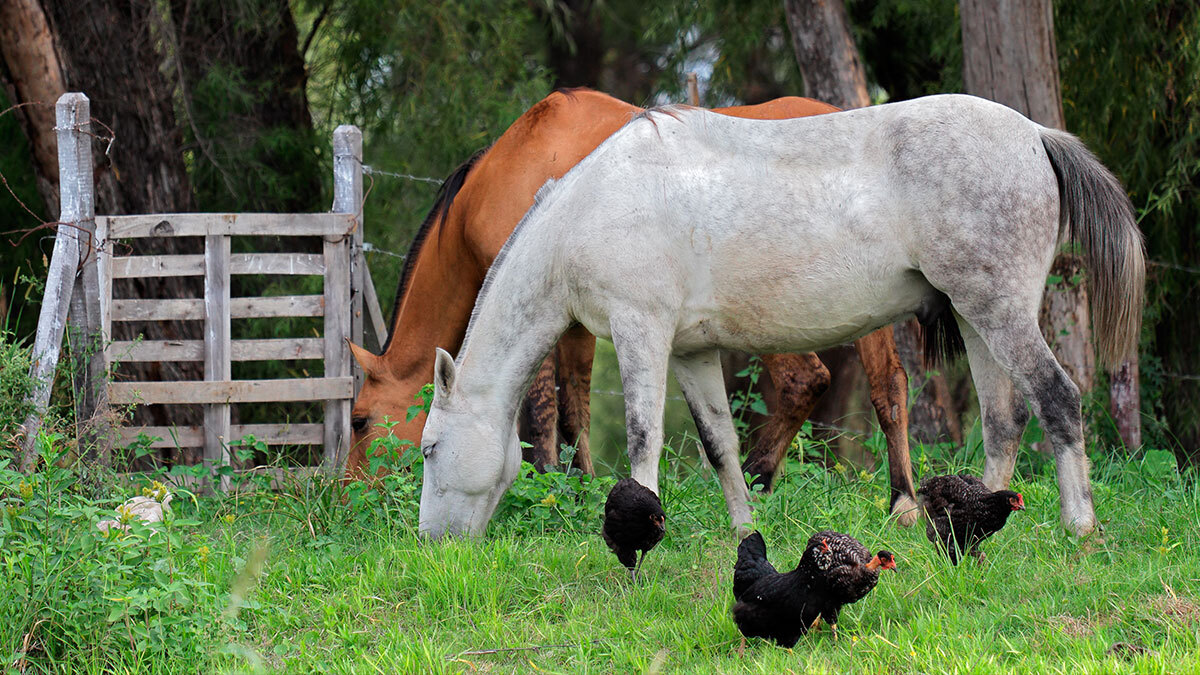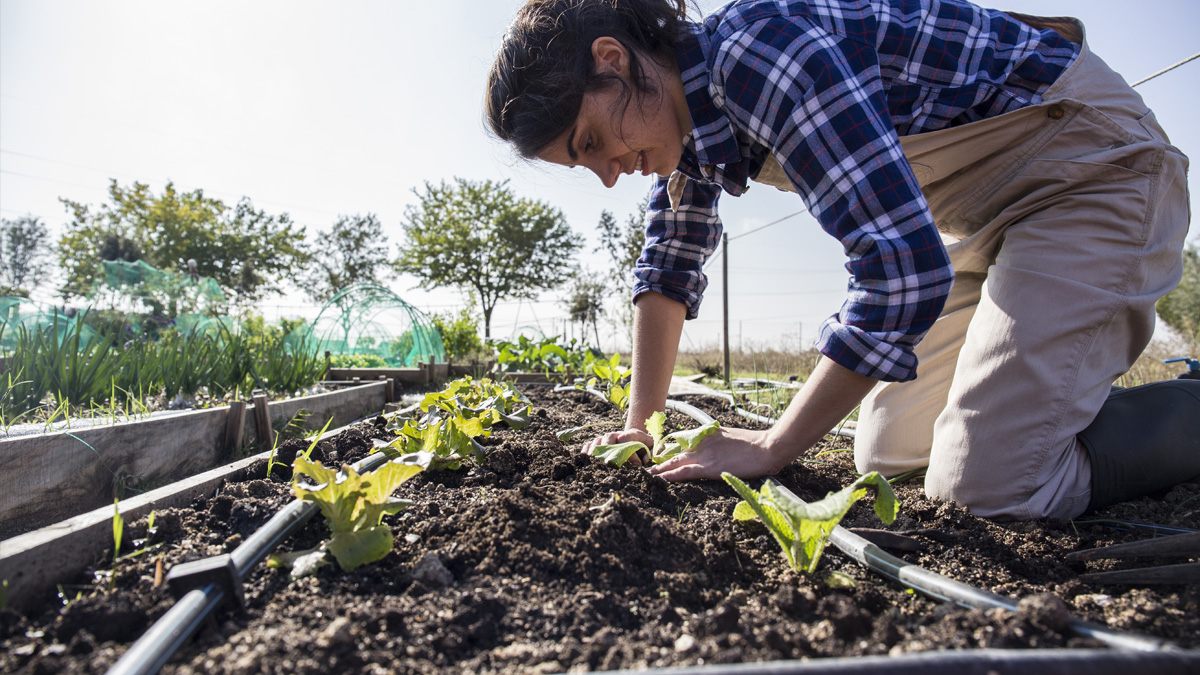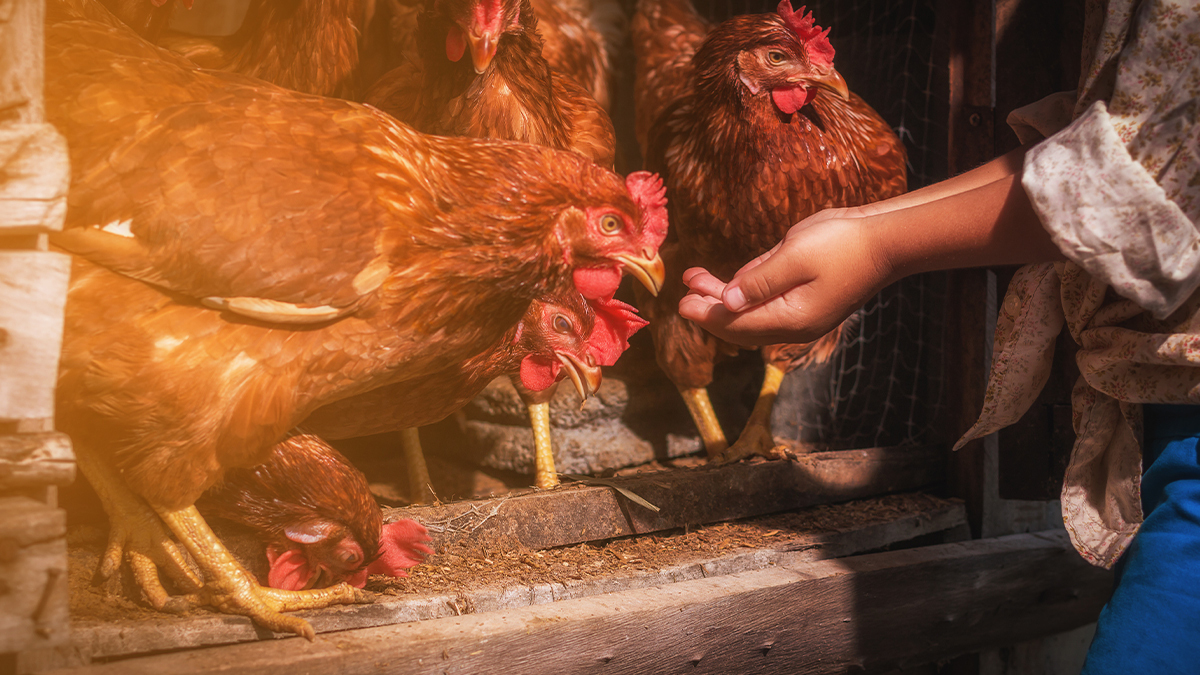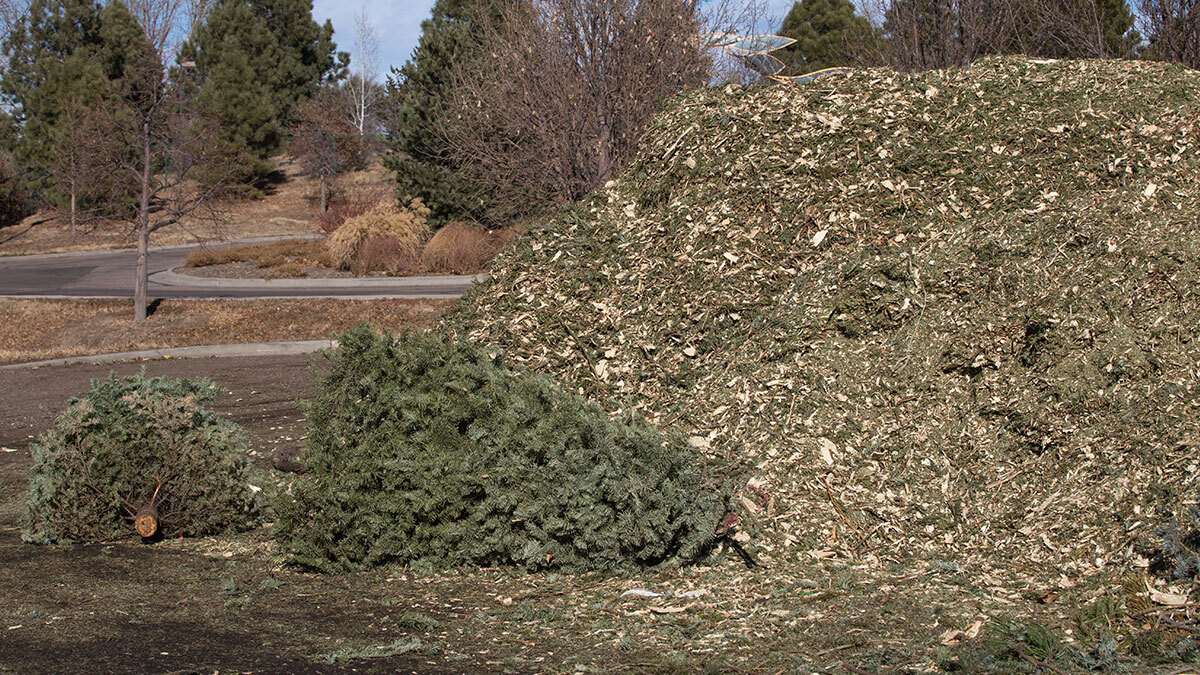on
You’ve had some success with your chickens, and now you’re considering adding more livestock to your hobby farm.
Is raising livestock together possible?
Yes! Many homesteaders have had success raising livestock together. It often proves beneficial for the animals and the land.
The key is to carefully consider your plan for raising livestock together.
For example, you shouldn’t put all your animals in the same space with the same food and water source and expect things to go well. This will not form companionship. Instead, it’ll breed competition.
Successfully raising livestock together requires you to consider the following:
- Eating habits
- Watering habits
- Housing needs
- Special nutrient requirements
- Type of care needed
- Size
- Behavior issues
- Parasites
In addition, there are some livestock pairings that work better than others.
For example, cows tend to pair well with all livestock. In contrast, pigs can be difficult to pair with certain types of livestock since they are omnivores.
Follow these dos and don’ts for raising livestock together to enjoy a multispecies homestead.
Do Give Them Enough Space
Space is critical when it comes to raising livestock together. Some groups of livestock, such as chickens, require significantly less space than others, like cattle.
You can’t just think about the acreage needed for each animal—each type of livestock has unique housing needs, too. Your space will need to accommodate each type of housing. It is also important to consider future space needs.
If you have nesting animals, you will need to provide a safe, quiet space away from other animals.
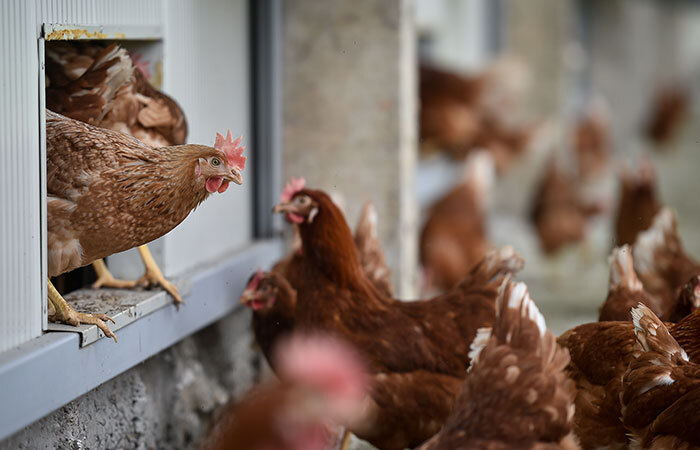
Don’t House Them Together
It is important to house livestock separately. If you house them together, they won’t have enough space, and it may be hazardous.
For example, if you house pigs with sheep, pigs will destroy the forage and the sheep won’t have anything to eat.
Do Choose Animals That Prefer Different Forages
Speaking of forage, it is wise to choose animals that prefer different forages so they don’t have to compete for food.
Fortunately, this is easy to do.
Different livestock species graze and forage differently. For instance, some animals just nibble the top of grasses. Other animals eat brush or non-grass plants, or even go for bugs.
Moreover, raising livestock together can lead to successful cross-grazing. Chickens help control parasites and flies by eating them when they live with horses and cows. In another example, sheep prefer grass while chickens prefer bugs.
[Related Read: How to Make Your Own Livestock Feed]
Don’t Force Animals to Compete for Food
Raising livestock together becomes a problem when the animals are forced to compete for food. This should not happen.
In addition to foraging, you will need to keep each livestock group’s food separate. Animals require certain diets, and this diet can be hurt if other animals take what is theirs.
You don’t want to deprive your livestock of the nutrients they need because of easy and unrestricted access to one another’s food. You don’t want to cause competition among your animals, either.
Do Use a Strict Parasite Program
Every farmer wants to avoid parasites. Raising livestock together requires added attention to parasite control.
Animals may share parasites with other species when they are kept together, eat together, and share water.
The good news is that some animals help with parasite control, such as chickens.
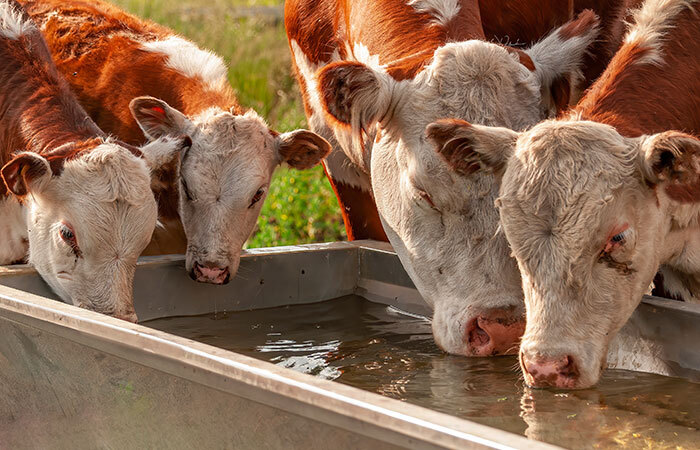
Don’t Share Dirty Water
Speaking of parasites, you want to be extra careful with watering.
Livestock have different watering needs. For example, chickens do not require the same amount of water as ducks. Ducks need water to drink and bathe in. But both chickens and ducks can defecate in water sources.
You do not want your animals drinking water with bacteria-filled waste in it. The short of it is that you don’t want to use one water trough for all your livestock.
[Related Read: Stop Your Livestocks’ Water from Freezing]
Do Create Individual Feeding Stations
As mentioned, a lack of food will turn your livestock from friends to foes. You can avoid this by creating individual feeding stations.
Don’t Use On-Demand Feeders
On-demand feeders are a big risk because they tempt other animals to eat food that is not made for them.
Instead, you want to observe individual feeding times for your livestock to avoid unnecessary sharing of nutrients.
However, chickens can enjoy the spilled grain left behind from bulk feeders without a problem.
Do Keep Baby Animals Separate
Until your babies are able to run and escape, they should be kept separate from larger livestock.
Newborn animals, like lambs, should be kept away until they can move freely.
This is not because other animals will be aggressive, but because newborns aren’t able to move out of the way of bigger animals when needed.
Hatchlings should also be kept separate from other animals. Again, this is because they won’t be able to move or escape danger (such as being accidentally stepped on).
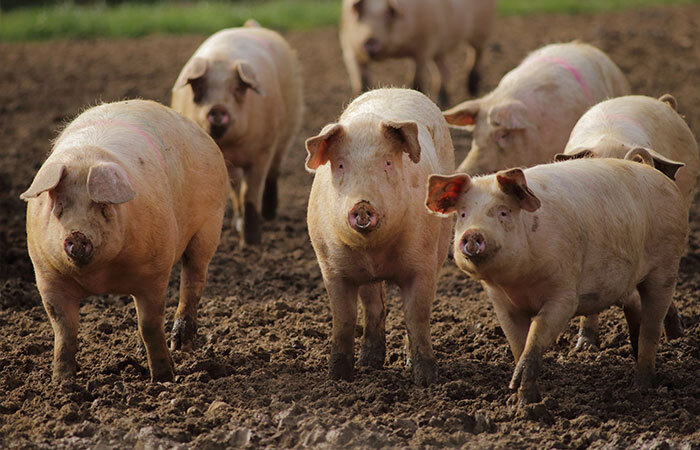
Don’t Mix Small Animals with Pigs
As much as you don’t want to believe your pig will hurt your small birds, you’d be wrong.
While pigs can pair well with many types of livestock, it is risky to pair them with yard birds.
Pigs tend to root in the soil and eat bugs and other subterranean food, but they are not herbivores. They are technically omnivores and have been known to eat yard birds on occasion.
Should you choose to keep chickens and pigs, you must keep the pigs separated from hatchlings.
Do Check Local Laws
Before you begin raising livestock together, it is important to check your local zoning laws.
Rural areas are more likely to allow raising livestock together, but city dwellers may face city or county ordinances against certain types of livestock.
Many ordinances prevent homeowners from keeping sheep, goats, cattle, or other types of grazing animals.
Don’t Use the Same Fencing
Just as animals have different housing needs, they also have different fencing needs.
For instance, goats are jumpers. You cannot use the same electric net fence for goats as you use for cattle. Wooden gates used for horses won’t work for goats or chickens.
Before you begin raising livestock together, draw out fencing plans.
Do Consider Guardian Animals
One of the benefits of raising livestock together is predator protection.
Larger animals, such as cows and sheep, will deter predators from attacking yard birds.
In addition to livestock, it is wise to consider adding a guardian animal, such as a dog, to your hobby farm.
[Related Read: Livestock Guardian Animals]
There you have it! Follow these dos and don’ts for raising livestock together for homestead success. What livestock will you house together, if you aren’t already?
Get access to premium content and more!



